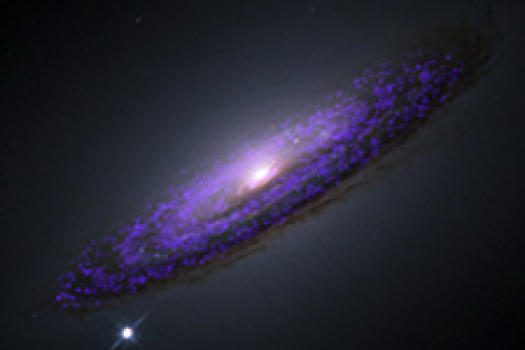Please note: Osher Rainforest will be closed for maintenance Jan. 14–16.
Science News
Mastering Mass Measurements
March 4, 2013
by Josh Roberts

Black holes seem to pique everyone’s interest. From the first theories to the first (indirect) observations, pretty much everyone has wanted to know more.
Unfortunately, black holes have remained notoriously tight-lipped with their secrets; by definition, these objects are so massive and compact that light itself cannot escape their gravitational influence, which makes studying them directly almost impossible.
Most of what we know about black holes has been inferred from their influence on the objects around them, such as the incredibly fast stars that orbit the supermassive black hole in the center of our galaxy (a relatively lightweight juggernaut that weighs in at merely millions of times the mass of the Sun). Other galaxies may have similar black holes within them, but this has been speculation until now.
In a recent paper from Tim Davis, of the University of Hertfordshire, scientists can observe the carbon dioxide clouds in the center of some galaxies to measure (again indirectly, but with great precision) the mass of black holes contained within. By watching the carbon dioxide molecules “circling the drain” these scientist have developed a new way to determine the mass of very distant black holes, ones so far away that there was no hope of ever seeing individual stars in orbit around them.
These distant galaxies are important to scientists for a number of reasons, but perhaps the biggest is that since they lie so far away, light takes millions or billions of years to span that distance. The further away a galaxy, the further “back in time” we see it! By observing these distant galaxies, scientist are hoping to determine the role these supermassive black holes play in the formation of galaxies and perhaps better understand our own galaxy’s evolution and how we came to be within it.
Josh Roberts is a program presenter and astronomer at the California Academy of Sciences. He also contributes content to Morrison Planetarium productions.
Image courtesy of University of Hertfordshire